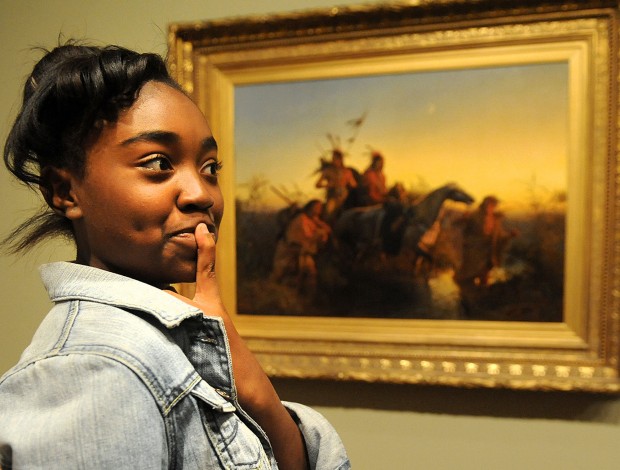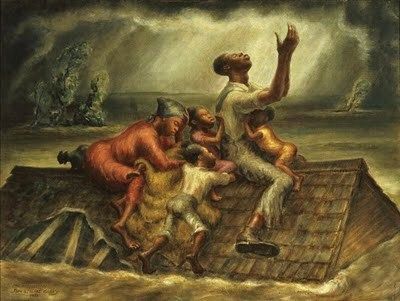Museum program challenges students to rethink race, beauty and stereotypes
Share
Explore Our Galleries
Breaking News!
Today's news and culture by Black and other reporters in the Black and mainstream media.
Ways to Support ABHM?
By Doug Moore, St. Louis Post-Dispatch

Lawrence Washington stood in front of the painting “The Mississippi” inside the St. Louis Art Museum. The 14-year-old didn’t say much, but the image of an African-American family atop the roof of their house as it is consumed by the churning waters of a flooded river stuck with Lawrence a month after the visit.
Seeing a black family losing everything, their lives threatened, with no sign of help, was frustrating. And surprising.“It was only black people up there,” Lawrence said last week. “It made black people look kind of bad.”
It was the first visit to the museum for Lawrence, who was among 12 eighth-graders from Brittany Woods Middle School in University City participating in a program that has helped nearly 9,000 students see art in terms of class, gender and race […]
This is the 14th year the World of Difference Institute, a part of the Anti-Defamation League, has worked with the art museum for the Concepts of Beauty and Bias program.
The painting Lawrence commented on was done by John Steuart Curry, a white Midwesterner, and completed in the mid-1930s, well before the Civil Rights movement took hold.
“At the time, there was a lot of prejudice toward black people,” docent Gin Wachter told Lawrence and his classmates, all African-Americans. “This artist did not like this.”
At that time, she said, rescuers would assist white people first “and let black people fend for themselves,” Wachter said. And while the painting is nearly 80 years old, Monica Black, a facilitator for the program, said the image was eerily similar to photos of black families stranded in their homes during Hurricane Katrina in 2005.
The painting was used as a way to tie the past to the present and to make the students wonder if the imagery would have been different had a black artist painted the scene[…]
Coleman, the program director, said the program’s ultimate goal is that “students would recognize the value of their differences and walk away with actual skills to recognize the role they play in creating inclusive environments.”
Lawrence said he looks forward to his next trip to the museum. “I know now that it’s about more than a pretty picture.”
Read more about the program “A World of Difference” and students’ responses here.










Comments Are Welcome
Note: We moderate submissions in order to create a space for meaningful dialogue, a space where museum visitors – adults and youth –– can exchange informed, thoughtful, and relevant comments that add value to our exhibits.
Racial slurs, personal attacks, obscenity, profanity, and SHOUTING do not meet the above standard. Such comments are posted in the exhibit Hateful Speech. Commercial promotions, impersonations, and incoherent comments likewise fail to meet our goals, so will not be posted. Submissions longer than 120 words will be shortened.
See our full Comments Policy here.